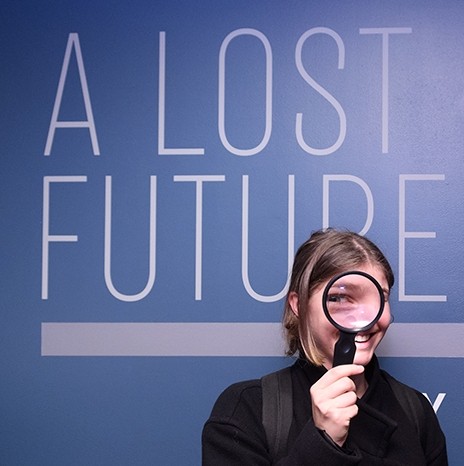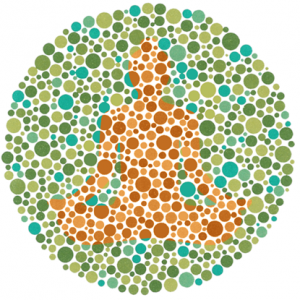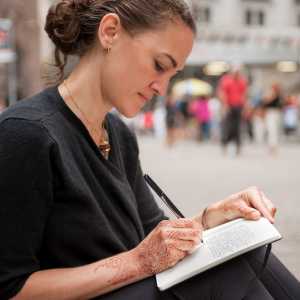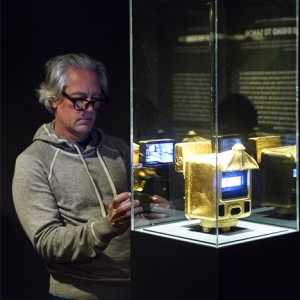
How long do you spend looking at a single work of art in a museum? On average, you’re likely to focus for less than thirty seconds! Not every work has the immediate magnetism of masterpieces like Starry Night or the Mona Lisa, but with the right approach, every art piece holds a treasure trove of information, inviting you to discover its magic hidden in the details. On Saturday, April 14, the Rubin is participating in Slow Art Day, a worldwide event encouraging the thoughtful exploration of artwork through “slow looking,” engaging with an artwork for ten minutes at a time. Read up on slow looking techniques below and head to the Rubin on Slow Art Day to test out your skills and refresh the way you experience art.
Take Your Time

Have you ever felt like you’re obligated to see every work in a museum during your visit? While the idea may be tempting, it’s not necessarily the best route to a rewarding experience. Allow space for looking, thinking, and processing. On Slow Art Day, we recommend spending ten to fifteen minutes at each artwork to explore the details.
When it’s not Slow Art Day, if you can’t commit to ten minutes on every piece, don’t stress. After all, two focused minutes are more enriching than thirty distracted seconds.
First Thing’s First

Gauging your initial reaction to an artwork can help you explore why you were drawn to the object and whether your first impressions are affected after deeper looking. Here are a few questions you can ask yourself:
- What is the first thing you notice about this artwork?
- Does this make you think of anything you’ve seen before or someone you’ve met, or a place you’ve been?
- What do you see that makes you say that?
Inspect the Details

Pay attention to specific aspects of the artwork. Try identifying the following:
- Medium or material used to make the artwork
- Color
- Texture
- Line, shape, and form
- Negative vs. positive space
- Size or scale
- Emotional expression, feelings evoked
Take a Break
Other works in the surrounding space may influence how you see the artwork. Try refreshing your visual palate by walking away from the artwork and coming back to it later. Do you notice anything different? Are you finding anything new?
Discuss with a Friend
Everyone brings their own perspective to art-viewing. If you’ve brought a friend to the Museum, discuss the artwork with them for a bit. What did they pick up on that escaped your initial impression? What can you learn from the differences between your assessments?
On Slow Art Day at the Rubin, you’ll be able to try out these techniques and take special slow art tours at 1:00 PM and 3:00 PM Head to the Museum on Saturday, April 14, and experience how slow looking can change your perspective on art. Plan a visit.
Photographs by Filip Wolak
Add Your Thoughts
Comments are moderated, and will not appear on this site until the Rubin has approved them.





Pretty great post. I just stumbled upon your blog and wished to say that I’ve really enjoyed surfing around your weblog posts. In any case I will be subscribing to your feed and I am hoping you write again soon!